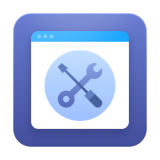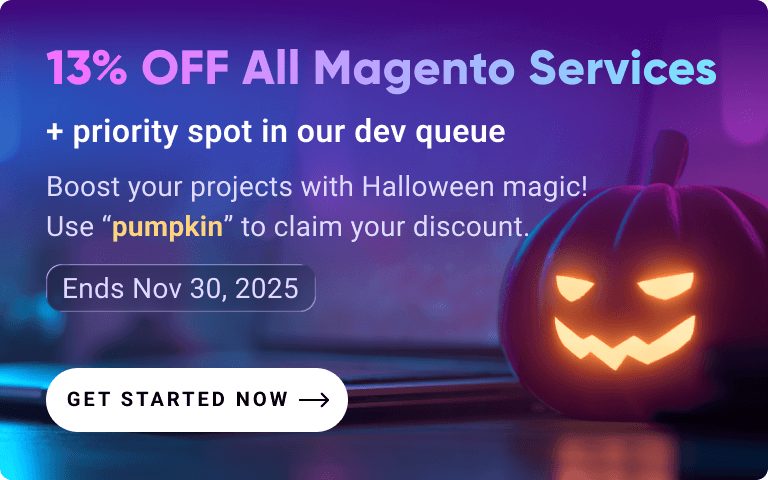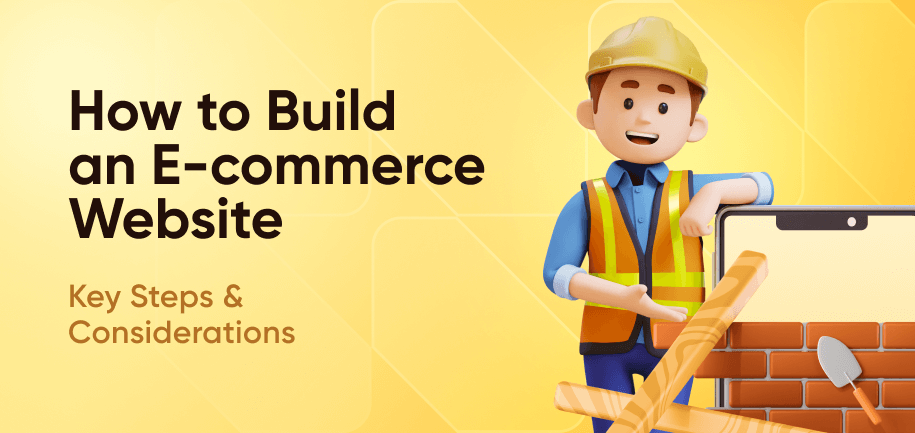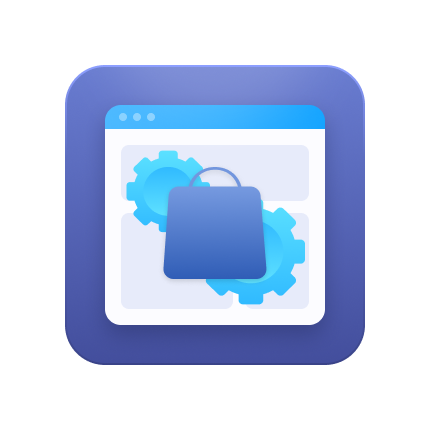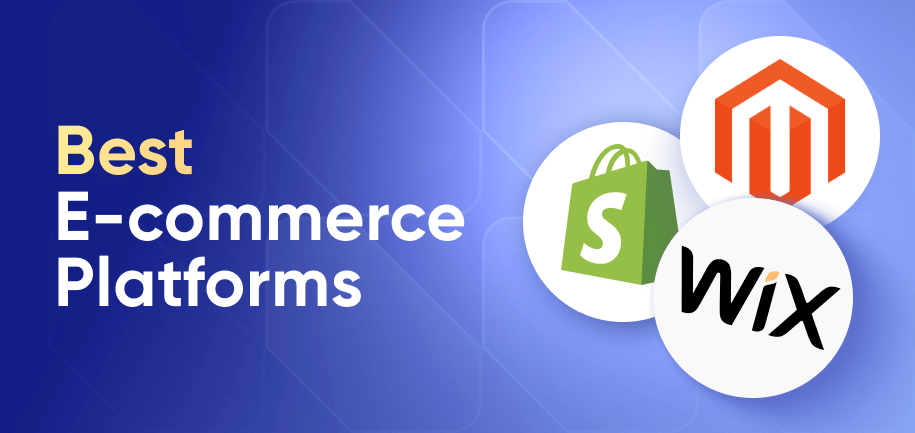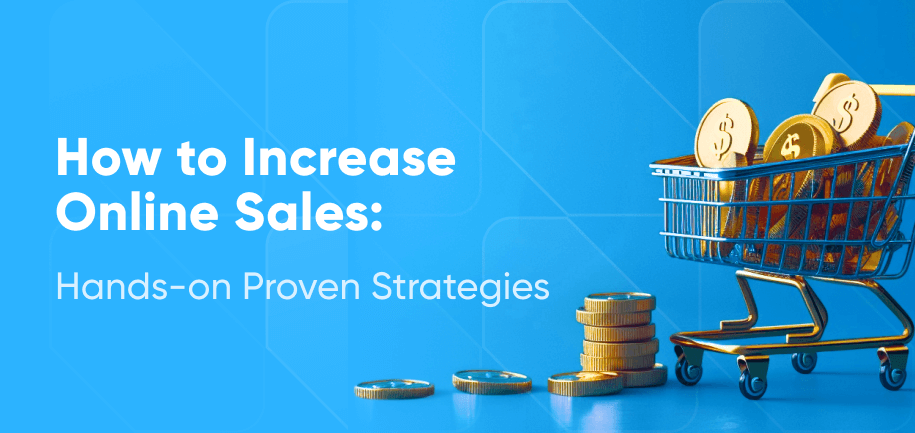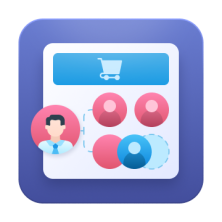Having an e-commerce website is no longer just a luxury for large enterprises but a necessity for businesses of all sizes aiming to thrive in the global marketplace. With more than 2.14 billion digital buyers worldwide, your store can access these vast markets through an effective e-commerce platform.
A robust e-commerce website enhances sales potential and allows you to maintain full control over your brand and customer experience. In this article, we'll guide you on how to build an e-commerce website from scratch, which platform is better, how much it will cost, and many other important aspects.
What Is an E-commerce Website?
An e-commerce website is an online platform that facilitates the purchase and sale of goods or services. It allows stores to present their products or services for customers to view and buy online.
E-commerce sites provide tools that ensure secure transactions, product exploration, and customer support. These features are key for optimizing your store’s operations and expanding into new markets.
4 Key Benefits of Creating Your Own Online Store
Starting an online store offers more than just convenience for customers. It brings numerous benefits that can greatly improve and transform your business operations. Here are the most significant ones:
- Wider Audience. Unlike traditional physical stores, an online store can connect you with millions of potential customers worldwide. This allows your store to access diverse and previously unreachable groups, which increase both visibility and reach.
- Increased Sales Potential. The ability to operate 24/7 means e-commerce websites maximize sales opportunities. With automated systems, your store can handle peak shopping periods and flash sales effortlessly, capture increased demand, and boost revenue streams.
- Brand Control and Customization. Creating an e-commerce store gives you full control over your brand's look, messages, and customer experience. This freedom helps you create a strong and clear brand story that connects with your audience.
- Cost-Effectiveness. Operating an online store can be more cost-effective than maintaining a physical location. You can save on rent, utilities, and in-store staff, and use all these resources to improve your digital presence, enhance product offerings, or expand marketing efforts.
E-commerce Website Development Costs
The cost of building an e-commerce website development varies significantly based on factors such as platform selection, design complexity, functionality, and ongoing maintenance. Here is more information on e-commerce store development pricing:
- Design Complexity – Between $0 to $200 for template designs and from $2,000 to $10,000 for custom.
- Functionality and Features – Basic functionality like shopping carts and payment gateways are about $50-$200/month, custom features can be from $2,000 to $10,000 to the project cost based on complexity.
- Development and Technical Expertise – Freelance developers’ rates can range from $15-$150 per hour depending on the market, and between $10,000 and $50,000 for full-service agencies that handle everything from design to launch, depending on the project’s scope.
- Ongoing Maintenance and Updates – Generally range from $500 to $2,000 per month.
- Hosting and Domain Costs – Shared hosting costs around $5-$15/month, while dedicated hosting for high-traffic sites is from $80 to $500/month, and domains cost from $10 to $50 yearly.
- Security Measures – SSL certificates are free with some hosting providers or might cost $50-$200 per year for advanced options, additional security plugins or services are from $0 to $100/month.
- Marketing and SEO – Initial SEO setup is between $1,000 and $5,000, ongoing SEO services are $500 - $2,500/month, and other digital marketing efforts (social media ads and pay-per-click (PPC) advertising) require a monthly budget starting around $500 and can go into thousands depending on scope.
If you seek expert guidance and a smooth development process, feel free to contact us for professional development services.
Read More: E-commerce Website Development Cost
Choosing the Right E-commerce Platform
Picking the fitting e-commerce platform is important to ensure smooth operation and allow your store to grow. Here's a comparison of some well-known platforms for building your own online store:
Magento
Magento is a powerful and highly customizable platform, ideal for large businesses and enterprises with technical expertise. It's open-source and free to start, although costs for hosting and customization can vary. Magento offers extensive features and scalability, providing the flexibility needed for complex operations and advanced e-commerce needs.
Read More: Full Magento Overview
Shopify
Shopify is easy to use and comes with a wide range of apps to enhance your store. It's great for beginners and grows with your business. Plans start at $29/month, and it includes features like Shopify Payments and support for physical stores.
Read More: All About Selling on Shopify
WooCommerce
WooCommerce works with WordPress and offers a lot of customization. It's perfect for those who want more control over their website. While it's free, you might pay for hosting and extra features. It's ideal for anyone who enjoys a hands-on approach.
BigCommerce
BigCommerce provides powerful tools for stores looking to expand. It offers features for SEO, selling on multiple channels, and different payment options. With pricing from $29.95/month, it supports businesses planning to scale up without extra transaction fees.
Read More: Why Use BigCommerce
Wix
Wix is user-friendly with a simple drag-and-drop editor, suitable for small businesses and startups. It's affordable, starting at $23/month, and offers various design templates and marketing tools, which makes it easy to build an engaging online presence.
| Feature | Magento | Shopify | WooCommerce | BigCommerce | Wix |
|---|---|---|---|---|---|
| Ease of Use | Complex setup; strong technical skills needed | Very user-friendly; easy setup | Requires WordPress knowledge | User-friendly with guided setup | Very easy with drag-and-drop editor |
| Customization | Highly customizable; requires coding expertise | Good customization through apps | Highly customizable with plugins | Limited compared to WooCommerce | Many templates available |
| Pricing | Free (Open-source); costs for hosting and customization | Starts at $29/month | Free core; hosting costs apply | Starts at $29.95/month | Starts at $23/month |
| Payment Options | Supports numerous payment gateways | Shopify Payments and others | Various gateways available | Multiple options, no transaction fees | Supports many gateways |
| Support | Community support; paid professional support options | 24/7 customer support | Community support and forums | 24/7 support | Reliable support |
| SEO & Marketing | Advanced SEO capabilities; marketing tools available | Good SEO tools | SEO plugins available | Advanced tools for SEO | Built-in marketing features |
| Best For | Large businesses and enterprises | Beginners and growing businesses | Tech-savvy users | Businesses aiming for rapid growth | Small businesses and startups |
Read More: Best E-commerce Platforms
Setting Up Your E-commerce Website
A successful e-commerce website requires a clear online identity and reliable performance. Here, we cover the steps to register your domain name and select the right web hosting, both important for your store launch.
1. Registering a Domain Name
Choosing a domain name is a critical first step in starting an e-commerce website. Your domain name should be memorable, easy to pronounce, and reflect your brand identity.
Here are some tips to help guide you on how to select and register a domain name that's perfect for your e-commerce store:
- Keep it short and simple: aim for a domain name that's concise and easy to type. This reduces the chance of misspellings and makes it easier for customers to remember.
- Include keywords that relate to your business or products, which can help with search engine optimization (SEO) and make your site more discoverable.
- Ensure that your domain name resonates with your brand. It should reflect your business's values and products or services.
- While ".com" is the most popular and preferred extension, don't disregard other options like ".shop", ".store", or country-specific extensions if they fit your brand strategy.
- Use a domain registrar like GoDaddy, Namecheap, or GoogleDomains to check the availability of your desired domain name. You can often find alternative suggestions if your first choice is taken.
- Once you've settled on the perfect domain name, register it as soon as possible to ensure it's not taken by someone else.
2. Selecting Web Hosting Services
Reliable web hosting is key for site performance and security. Consider such factors when choosing a hosting service:
Types of hosting
Depending on your website's expected traffic, level of technical management required, and the nature of your e-commerce platform (self-hosted vs. hosted), your hosting needs can vary:
- Shared Hosting: An economical choice for startups or small businesses. It involves sharing server resources with other websites, which can affect performance.
- VPS Hosting: Offers more resources and better performance by partitioning part of a server specifically for your site, suitable for growing websites.
- Dedicated Hosting: Provides an entire server for your site, ideal for large e-commerce businesses that need maximum control and performance.
- Cloud Hosting: Scalable and reliable, perfect for businesses expecting variable, high traffic.
Key features to look for
- Uptime Guarantee: Choose hosts that offer at least 99.9% uptime to ensure your site is always accessible.
- Customer Support: Opt for services with 24/7 support, ideally via multiple channels like chat, phone, and email.
- Security Features: Ensure the host offers essential security mechanisms such as SSL certificates, firewalls, and regular backups.
- Scalability: Your host should be able to grow with your business and manage increased traffic without issues.
Popular hosting providers
- Bluehost: Known for excellent customer service and reliability; recommended for shared hosting.
- SiteGround: Offers strong performance and security features, great for growing businesses.
- HostGator: Provides affordable plans for beginners with scalable options.
- AWS (Amazon Web Services): Offers robust cloud hosting solutions for enterprise-level needs.
Read More: Best Hosting Providers for Magento
Designing Your Online Store
To attract potential customers and drive conversions, you should ensure that your online store is inviting and user-friendly. Thoughtful design choices can greatly impact it.
Choosing a Website Theme or Template
The design of your online store starts with choosing the right e-commerce website template or theme. Here are six key considerations:
- A clean, simple design helps users focus on your products without unnecessary distractions. Ensure that the navigation is intuitive, allowing users to find what they’re looking for quickly.
- Choose themes that are optimized for performance. A fast-loading website improves user experience and can positively impact your store's search engine ranking.
- The aesthetics of your site should align with your brand and appeal to your target audience. Look for themes that offer a visual style coherent with your brand message and product offerings.
- Select a theme that is designed with SEO best practices in mind to help your store rank higher in search engine results.
- Consider themes from reputable developers with positive reviews and good support options, ensuring you can get help if needed.
- Ensure the theme looks good and functions well across different devices and browsers. This will help in reaching a wider audience and improving conversion rates.
Navigating website design can be a challenging aspect of development, but our professional website design assistance is just a call away.
Customizing Your Store's Appearance
Once you’ve selected a theme, customizing your online store’s appearance is no less important step in establishing your brand identity and optimizing user experience.
- Branding: Use consistent colors, fonts, and imagery to create a cohesive shopping experience. Display your logo prominently to strengthen brand recall and set your store apart from competitors.
- Layout Customization: Design your layout to guide users smoothly toward actions like purchasing or signing up. Highlight key products and calls to action using size, color, and placement.
- Mobile Responsiveness: Ensure your site is mobile-friendly, as many shoppers use their phones. Test your site on different devices to guarantee elements display and function properly.
- Product Display: Use high-quality images and detailed descriptions to showcase your products comprehensively. Features like zoom and product videos can help users better understand your products.
- Typography: Choose legible fonts that align with your brand and are easy to read on all devices. Pay attention to font size and contrast to ensure readability.
- Feedback and Iteration: Gather user feedback and analyze traffic data to make iterative adjustments to your design.
Adding Products to Your Store
Setting up your online store requires careful attention to how you present your products. Here are some basic tips on how to ensure your product listings and images captivate your audience:
Product Listings
When crafting product titles and descriptions, it's important to be both clear and concise. Your product title should be straightforward, including key details such as the brand, model, color, or size to effectively inform customers.
Don’t forget about SEO practice: use relevant keywords that your target audience is likely to use which will make your products more discoverable.
Your product descriptions should emphasize the benefits of each feature rather than just listing them. Consider these elements to enhance readability and engagement:
- Storytelling: Incorporate stories about the product's origin or unique design inspiration to create a stronger connection with your audience.
- Tone Consistency: Align your descriptions with your brand’s voice—whether casual, formal, or playful—to maintain uniformity.
- Call-to-Action: Include motivating phrases like "Buy now" or "Add to cart" to encourage immediate action from potential buyers.
Read More: Best Colors for the ‘Buy Now’ Buttons
High-Quality Images
Visuals play an important role in e-commerce, they act as a key factor in attracting and engaging customers. Use only high-quality images, and invest in professional photography to set your store apart. Capture products from multiple angles to offer customers a comprehensive view, and apply different lighting setups to enhance product perception.
Include descriptive alt text for each image to improve accessibility for all users and enhance SEO, which makes your products more discoverable. Include lifestyle images to enrich the customer experience and demonstrate the product in a real-life context, which helps customers visualize its use in their daily lives.
Setting Up Payment and Shipping Options
Streamlined and user-friendly payment and shipping processes can greatly enhance your customers' purchasing experience. Below, we'll explore how to configure payment gateways and establish shipping methods and policies.
Configuring Payment Gateways
Integrating payment gateways into your website is important for processing transactions securely and efficiently. Here’s how you can approach it:
- Select Payment Methods: Consider popular options like credit/debit cards, digital wallets (e.g., PayPal, Apple Pay), bank transfers, and cryptocurrency. Evaluate their popularity and suitability for your target audience.
- Choose a Payment Gateway Provider: Research and compare different providers based on fees, security features, and compatibility with your e-commerce platform. Ensure the provider supports the payment methods important to your business.
- Integrate the Payment Gateway: Use APIs or platform-specific plugins to integrate the payment gateway into your site. Thoroughly check the payment process to ensure a seamless and secure experience for customers.
- Ensure Security and Compliance: Equip your website with SSL certificates and adhere to PCI standards to protect transactions and customer data. Implement fraud detection measures to bolster security further.
Read More: Best Payment Gateways for the USA, UK, and Australia
Establishing Shipping Methods and Policies
Establish comprehensive shipping methods and policies to meet customer expectations and manage logistics effectively. Here's a structured approach for you to consider:
Determine Shipping Rates
Decide between options like flat rates for simplicity, table rates for precise cost management based on factors such as weight and destination, or offering free shipping to boost sales, which requires careful balancing of costs.
Select Delivery Options
Provide a variety of choices, including standard shipping for cost-effectiveness, expedited shipping for faster delivery at an extra charge, and local pickup to save on costs and potentially increase store visits. Consider same-day or next-day delivery if feasible to add value.
Define Shipping Policies
Clearly communicate delivery timeframes and handling times to manage customer expectations. Include detailed information about international shipping, such as fees and potentialdelays. Clearly outline your returns and exchange procedures to build trust, and consider offering shipment insurance and tracking options for added customer reassurance.
Evaluate and Optimize
Continuously gather customer feedback to identify areas for improvement. Monitor costs and performance to find opportunities for increased efficiency and better customer satisfaction.
Read More: E-commerce Delivery Strategy
Ensuring Website Security and Compliance
To protect your business and customers, it's important to have a secure website and follow the law. Here, we'll talk about the importance of SSL certificates and understanding legal rules.
Implementing SSL Certificates
SSL (Secure Sockets Layer) certificates hold great importance in the protection of customer data and the development of trust with your audience. An SSL certificate encrypts data exchanged between your website and users, keeping it safe from unauthorized access.
This encryption prevents sensitive information, such as credit card numbers and personal details, from falling into the hands of malicious parties.
Many customers hesitate to interact with websites that lack this security sign, so an SSL certificate is very important for building customer confidence and maintaining your brand's reputation.
Understanding Legal Requirements
Navigating e-commerce legal requirements is another essential aspect of running a secure and compliant website. You must be aware of and adhere to various legal considerations, such as privacy policies, terms of service, and GDPR compliance.
- Privacy Policies: Clearly outline how you collect, use, store, and share customer data. This transparency is not just a legal necessity but also a practice that encourages trust among your visitors.
- Terms of Service: Define the rules and guidelines that users must agree to in order to use your website or services. This document helps protect your business from liability and clarifies user responsibilities.
- GDPR Compliance: If your website serves customers in the European Union, you need to comply with the General Data Protection Regulation (GDPR). This regulation mandates strict guidelines on data protection and privacy, including obtaining explicit consent for data collection and providing users the right to access or delete their data.
Struggling with legal compliance? Don't worry, Amasty's managed security services are designed to help you navigate these complexities effortlessly.
Testing and Launching Your E-commerce Website
To start your e-commerce store is an exciting venture that will require careful planning and execution on your part. For a successful launch, you need to conduct thorough testing and implement effective promotional tactics to ensure your store is ready to make its mark.
Pre-Launch Checklist
We've assembled a 6-part checklist for you to verify if your e-commerce website is ready to go live.
Functionality Testing
- Test compatibility with all major browsers and devices.
- Test forms for proper functioning, including data submission.
- Validate payment gateways with various payment methods.
- Test user accounts, including sign-up, login, and password recovery.
Content Review
- Proofread for spelling, grammar, and punctuation errors.
- Optimize for SEO with titles, meta descriptions, and alt texts.
- Ensure brand voice and style consistency.
- Optimize images for quality and performance.
- Review legal texts for compliance.
Security Checks
- Verify SSL installation and HTTPS loading.
- Conduct security audits or penetration testing.
- Check appropriate user permissions and data protection.
- Ensure compliance with GDPR or CCPA regulations.
Technical Setup
- Set up analytics like Google Analytics for tracking.
- Verify necessary marketing tracking pixels.
- Create and submit a sitemap to search engines.
- Configure robots.txt for search engine indexing.
- Ensure CDN usage for faster global load times.
Marketing Preparation
- Plan pre-launch announcements on social media.
- Set up email notifications for subscribers.
- Distribute a press release to the media.
- Prepare customer support for the launch.
- Create necessary demos or tutorials for users.
Final Considerations
- Conduct a final walkthrough with the team.
- Have a contingency plan for post-launch challenges.
- Prepare specific actions and reviews for launch day.
- Conduct load testing to handle expected traffic.
Strategies for a Successful Launch
After you create an online store, your next most important step is to roll it out properly, with all the due publicity work done write. Here are some best practices to consider:
Teasers and Anticipation
Kick off by rolling out teaser campaigns across your social media platforms. Create a sense of mystery and excitement with sneak peeks and behind-the-scenes glimpses. Pair this with a countdown to the launch date to build urgency.
Influencer and Media Engagement
Collaborate with influencers who resonate with your brand ethos. Their reviews and exclusive codes can tap into wider networks. Simultaneously, reach out to journalists and bloggers. Craft compelling press releases to garner media attention.
Exclusive Offers and Events
Generate buzz through pre-launch offers. Reward early adopters with special discounts in return for newsletter sign-ups. Consider hosting an interesting launch event, possibly a live webinar or stream to showcase your new site's features.
Content and SEO
Anchor your strategy with solid content marketing. Develop blog posts and videos that draw in organic traffic. This, combined with rigorous SEO practices, ensures visibility and positions your site as a go-to in your niche from day one.
Post-Launch Considerations
Once your website is launched, the work is far from over. Continuous attention and strategic planning are important to ensure your site performs well, remains secure, and continues to meet your business goals.
Below, we outline key post-launch considerations, starting with monitoring website performance and ongoing maintenance.
Monitoring Website Performance
To make sure your store operates as intended, you need to continuously observe it, collecting and optimizing various metrics. Let's look at some group of tools you'll need for that:
- Google Analytics: This powerful tool provides comprehensive data on user demographics, traffic sources, and user interactions. Setting up goals and conversion tracking can help you measure sales and other critical actions on your site.
- Heatmaps: Tools like Hotjar or Crazy Egg allow you to visualize user behavior on your site. Heatmaps track where users click, how far they scroll, and which parts of a page attract the most attention.
- A/B Testing Tools: Platforms like Optimizely or VWO allow you to run experiments on different versions of web pages to determine which performs better regarding user engagement and conversion rates.
- E-commerce Analytics: For online stores, tools like Shopify Analytics or WooCommerce Reports provide insights into sales metrics, product performance, and customer behavior.
- SEO Tools: Tools such as Ahrefs or SEMrush help monitor your site's search engine performance, track rankings, and identify opportunities for improving visibility.
Ongoing Maintenance and Updates
To keep your new website secure, it's important to regularly apply security patches. These updates will help protect your site from vulnerabilities and potential cyber threats. Ensure your content remains fresh and engaging by updating blog posts, product descriptions, and images. This not only keeps your site relevant for users but also boosts your SEO efforts.
Focus on performance optimization to maintain an optimal load speed and mobile responsiveness. You also shouldn’t forget the quality assurance aspect, which is very important for your store to run smoothly. Discover how our professional QA services can help.
Implement a reliable backup strategy to keep your data safe. This way, you can quickly restore your site in case of any failures or data loss. Regularly update your site’s plugins and modules. This keeps your website compatible with the latest technologies and gives you access to new features.
Finally, actively gather and analyze user feedback. Use surveys, feedback forms, or usability testing to identify areas for improvement and enhance the user experience.
Frequently asked questions
The cost of building an e-commerce website ranges from $500 to $50,000+, depending on features and complexity. Basic sites start at $500–$5,000, while custom stores with advanced integrations can exceed $50,000.
The best platform depends on your business needs. Shopify is user-friendly, WooCommerce offers extensive customization, BigCommerce supports scalability, Magento is ideal for large, feature-rich stores, and Wix is great for simplicity.
Yes, online stores can be highly profitable with the right strategy, target market, and operational efficiency. Success depends on factors like product selection, marketing, customer experience, and scalability.
Yes, platforms like WooCommerce and Magento Open Source offer free versions, though you might incur costs for hosting, domain, and additional plugins or themes.




